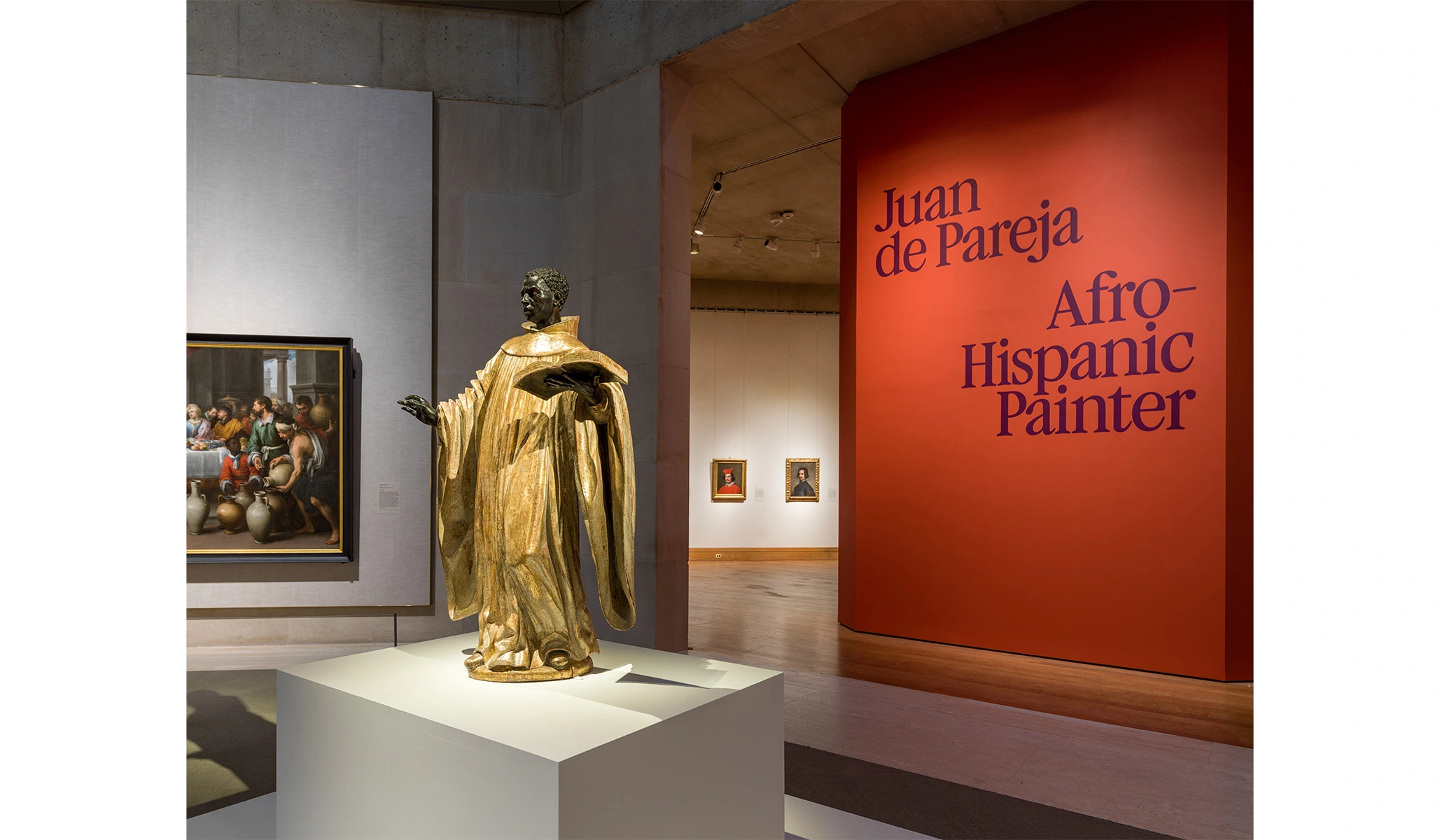The Metropolitan Museum of Art is currently showcasing a remarkable exhibition titled “Juan de Pareja: Afro-Hispanic Painter.” With its topical and revelatory nature, the exhibition offers a succinct, smart, and scholarly exploration of the subject. While some aspects may be tendentious, the inclusion of eight to ten paintings by Diego Velázquez, including two stunning works by Murillo, makes it hard to argue against the merits of the exhibition. However, the centerpiece of the show is undoubtedly Velázquez’s 1650 portrait of Pareja, his former slave turned assistant and artist, which was acquired by the Met in 1971 for a record-breaking price of $5.5 million.
Velázquez, known for his limited output of only about 250 works, was not only the court painter to Philip IV but also served as the king’s chief curator and palace decorator. Most of Velázquez’s art is housed in the Prado Museum in Madrid, making his works rare on the art market. The portrait of Pareja, with its muted and harmonious grays and blacks, showcases Velázquez’s mastery of intimate portraiture. Its acquisition by the Met was a sensation due to its price, rarity, and quality. The painting had previously resided in the Earl of Radnor’s country house in Wiltshire since around 1814.
“Juan de Pareja” offers a fresh perspective on Velázquez and his work. The portrait of Pareja, which gained fame when Velázquez first exhibited it in Rome in 1650, was a triumph before a sophisticated crowd. It paved the way for Velázquez to paint other Vatican luminaries, including his famous “Portrait of Innocent X.” The exhibition sheds light on Pareja’s own artistic production and examines the issue of slavery in Spain, particularly in Seville, where Velázquez was born and worked before moving to Madrid. The show also explores the portrait’s place in the Harlem Renaissance, providing valuable insights into this period.
While the exact circumstances of Pareja’s ownership by Velázquez remain unknown, documents from the mid-1630s mention Pareja’s name in relation to the rising court painter. It is speculated that Pareja was born in Antequera around 1608, although this date is based on a biographical survey of Spanish artists published in the 1710s. Pareja’s death is believed to have occurred when he was in his early 60s.
To fully appreciate the significance of the “Juan de Pareja” exhibition, it is important to understand the background of Velázquez. Born to modest parents, Velázquez began his artistic career as an apprentice in Francisco Pacheco’s studio around 1610. He mastered the dark and crisp style of Sevillian painting, which combined the tenebrism of Caravaggio with the lifelike qualities of Spanish polychrome sculpture. Velázquez’s early works primarily consisted of still lifes and scenes of everyday life.
Velázquez’s talent caught the attention of Philip IV through the Count-Duke of Olivares, his prime minister. After marrying Pacheco’s daughter, Velázquez became connected to influential networks. His appointment as a court painter allowed him access to the king’s extensive collection of Venetian paintings, which significantly influenced his artistic style. Velázquez’s art evolved from dark and austere to vibrant colors applied with delicate brushwork. During his time in Madrid, Velázquez also received mentorship from renowned Flemish painter Peter Paul Rubens, who was serving as a diplomat in the city.
In 1629, Philip sent Velázquez to Italy to acquire art and immerse himself in Italian style. This trip had a profound impact on Velázquez’s work, as seen in his paintings such as “Apollo in the Forge of Vulcan,” “The Toilet of Venus,” “The Surrender of Breda,” and numerous royal portraits. These works exemplify Velázquez’s ability to capture power, grandeur, and richness in his art.
Velázquez returned to Italy in 1649 for further art acquisitions, traveling extensively from Venice to Naples and making stops in various art hubs, particularly Rome. Pareja accompanied him during this journey. It was common for Spanish artists to have slaves, who primarily performed mechanical tasks in the studios. However, Pareja’s role expanded during their time in Italy, becoming Velázquez’s all-around assistant, confidant, and eventually, the subject of his portrait.
Velázquez exhibited the portrait of Pareja at the Pantheon in Rome in 1650, where it received high praise from contemporary artists. The portrait was admired for its lifelike quality and authenticity. Velázquez, perhaps using Pareja as a warm-up exercise, went on to paint his iconic “Portrait of Innocent X” and other notable Vatican figures. According to historical accounts, Velázquez sent Pareja and his portrait to various artists’ homes and well-connected individuals in Rome. This strategic move allowed Velázquez to market his own work through the popularity of Pareja’s portrait.
The exhibition delves into the complexities of Pareja’s identity and his role as an artist. While the term “Afro-Hispanic” is used to describe Pareja, it is worth noting that he was more accurately of Morisco heritage, with roots in the Islamic caliphate that once controlled Spain. Pareja’s dark complexion might suggest African ancestry, but the Moors who ruled Spain during that time were primarily from the Maghreb region, which is not sub-Saharan Africa. Moriscos, who were often at the lower end of the social hierarchy, frequently ended up as slaves. Slavery in Spain was predominantly an urban phenomenon, prevalent in affluent households and artist studios.
Despite his dark skin, Pareja considered himself Spanish and Catholic. He fully assimilated into Spanish identity and did not see himself as a former slave. His close association with the refined Velázquez and his life in royal palaces allowed him to absorb Spanish culture. The exhibition suggests that Pareja’s self-perception as a Spanish man may have been influenced by his white father. Velázquez’s signing of Pareja’s manumission papers in Rome further solidifies the bond between the two men.
The exhibition concludes with a section dedicated to Pareja’s own artistic output. While Pareja’s works are competent, they are often derivative of artists from the generation following Velázquez, such as Claudio Coello. Notable among his works is “The Calling of St. Matthew,” a large painting characterized by its crisp and clear style. Pareja prominently includes his self-portrait in the painting, presenting himself as a white man in elaborate attire. This self-representation reflects his assimilation into Spanish society and his desire to move forward rather than dwell on his past as a slave.
While the exhibition incorporates the perspectives of Arturo Schomburg, a historian and collector known for his contributions to the understanding of the African diaspora, some critics argue that his role in the show is tangential. Schomburg’s visit to Spain in 1926 to research slavery records, which led him to explore Pareja’s story, is discussed in the exhibition. However, the inclusion of Schomburg’s quotes and articles may detract from the overall scholarly focus of the show.
“Juan de Pareja” also features works by other artists, such as Francisco de Zurbarán and Bartolomé Esteban Murillo, which provide additional context and aesthetic contrasts. Zurbarán’s painting “Battle between Christians and Muslims at El Sotillo” offers an intellectual and visual jolt, depicting a Roman Catholic miracle during the Reconquista. The exhibition also highlights Spanish lusterware and silver, showcasing the cultural and historical significance of these art forms.
Overall, the exhibition successfully presents the story of Juan de Pareja and his relationship with Velázquez, shedding light on the complexities of race, identity, and art in 17th-century Spain. The inclusion of Velázquez’s masterpieces, along with works by other artists, enriches the narrative and captures the essence of the era. However, some critics argue that the exhibition’s structure could be improved by placing less emphasis on Schomburg and providing further explanation for the inclusion of certain artworks.

